Welcome to the vibrant world of color blocking, where your living room becomes a canvas for creativity and expression! Whether you’re a novice stepping into your first design project or a seasoned decorator seeking fresh inspiration, our guide, “7 Artistic Color Blocking Tips For Living Rooms,” is your ticket to a transformative journey. By exploring these innovative ideas, you’ll unlock the secrets to crafting a space that not only catches the eye but also brings joy and harmony to your home.
In these pages, you’ll discover practical techniques that can elevate your living room from ordinary to extraordinary. From bold, daring contrasts to subtle, sophisticated palettes, these tips offer a treasure trove of possibilities to suit any taste or experience level. Imagine the satisfaction of seeing your space reflect your personal style and feeling the pride of a room that wows every guest. Get ready to dive into the art of color blocking, where the rewards of successful interior design await, and transform your home into a masterpiece of warmth and personality.
Define Zones with Bold Hues
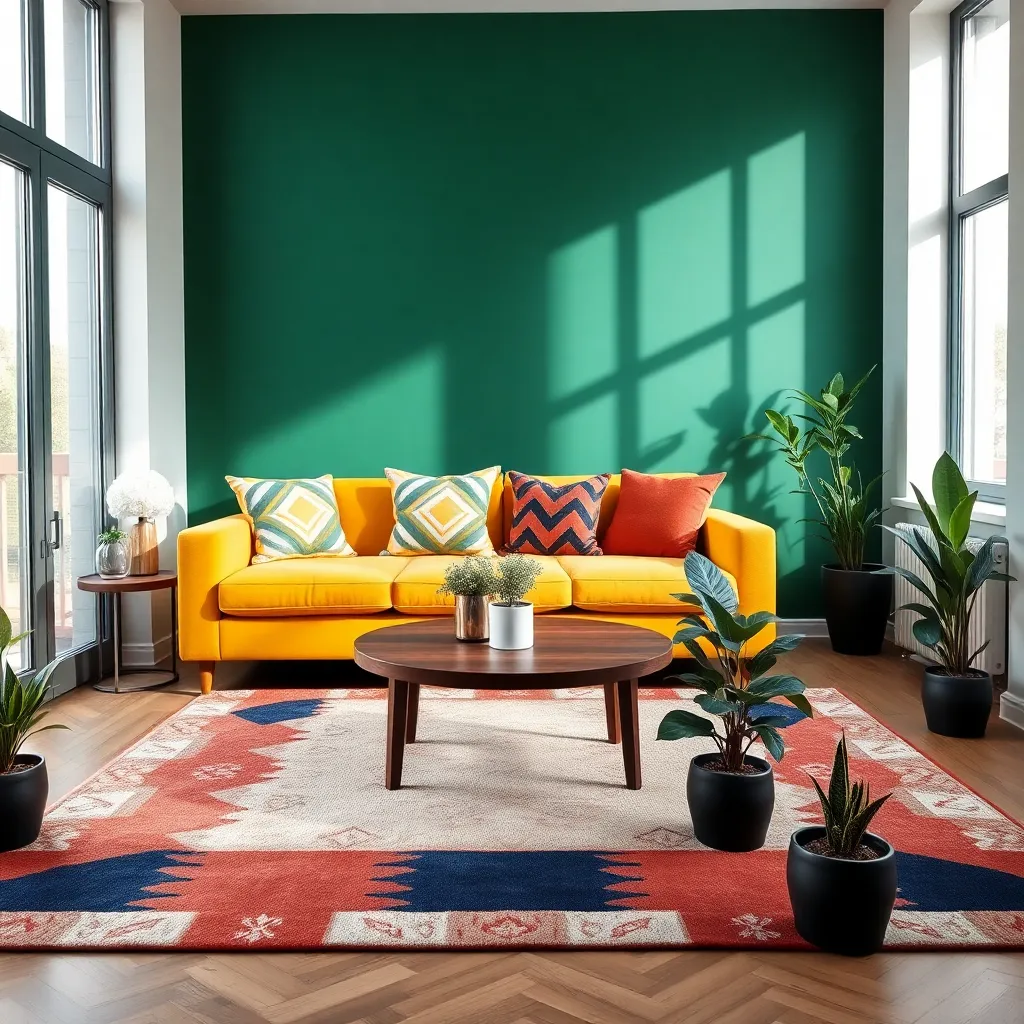
Bold hues can effectively define zones within your living room, creating visual interest and functional spaces. Start by identifying the primary activities in your living room, such as lounging, reading, or entertaining, and assign each a distinct color palette to visually separate these areas.
Consider using a dramatic color, like a deep teal or rich mustard, as a backdrop for your main seating area. Pair it with complementary colors for furniture, such as a charcoal sofa or a navy armchair, to create a cohesive yet dynamic look.
For smaller zones, such as reading nooks or workspaces, use a contrasting color to differentiate these areas from the main living space. A pop of bright coral or emerald green on a single wall or in a piece of furniture can distinctly mark these zones while adding energy to the room.
Experiment with color-blocked rugs to further delineate areas within your living room. Opt for a rug that features multiple colors from your palette to tie different zones together while maintaining their individuality.
Contrast Walls with Accent Pieces
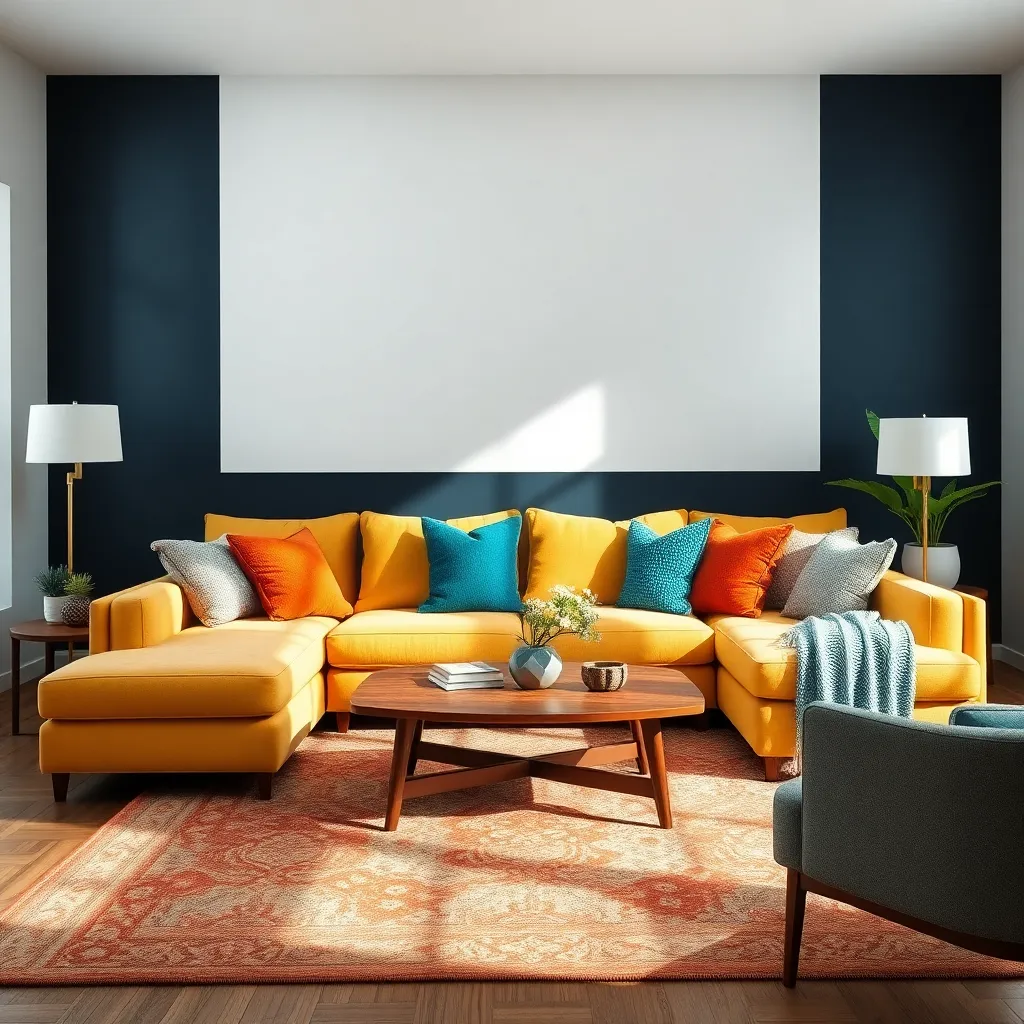
Using contrast walls with accent pieces can dramatically transform your living room, creating a focal point that draws the eye. Begin by choosing a bold wall color that contrasts with the rest of your room, such as a deep navy against lighter neutral walls.
To complement your contrast wall, incorporate accent pieces in similar or complementary hues. For example, if your wall is navy, consider adding mustard yellow throw pillows or a rug with touches of navy and gold.
Placement is crucial when using accent pieces to enhance a contrast wall. Arrange furniture like a mid-century modern armchair or a contemporary sofa in a way that faces or frames the wall, helping to anchor the space.
Advanced decorators might layer textures and patterns within the accent pieces to add depth and interest. Use materials like velvet for cushions or a patterned wool throw to bring warmth and complexity to the overall design.
Layer Textures in Complementary Colors
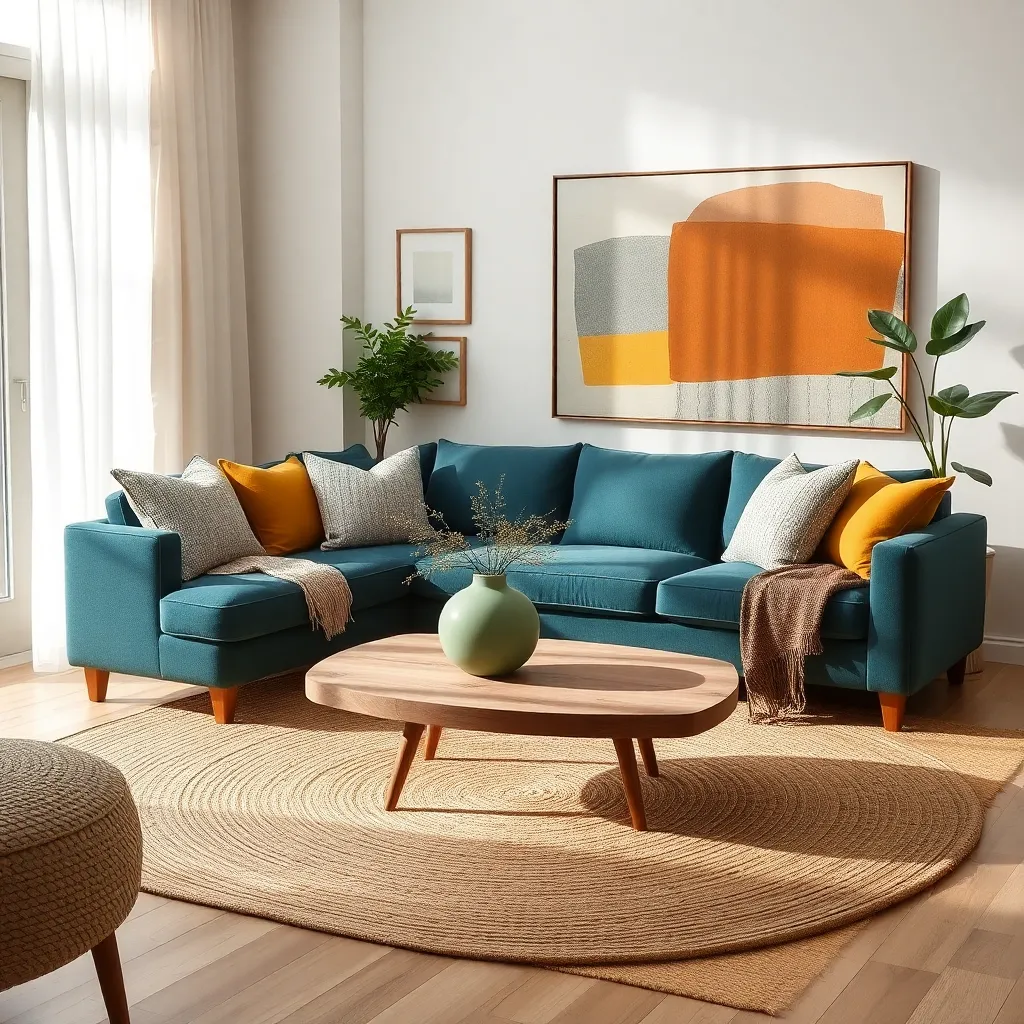
Layering textures in complementary colors can add depth and intrigue to your living room design. Start by selecting a base color palette and choose complementary shades that will enhance each other without overwhelming the space.
Consider incorporating a variety of materials such as velvet, linen, and wool to create a tactile experience. For example, pair a soft velvet sofa in a rich teal with linen throw pillows in muted mustard to achieve a balanced yet vibrant look.
For those new to layering, begin with large items like rugs and curtains in neutral tones, then introduce pops of color through smaller accessories. Mixing and matching textures in this way makes it easier to adjust the intensity of color as needed, ensuring flexibility in your design.
Advanced decorators might experiment with patterns that incorporate their chosen color scheme, such as geometric or botanical prints. Use these patterns sparingly, perhaps as accent cushions or a feature wall, to avoid clashing and to maintain a cohesive aesthetic.
Highlight Architectural Features
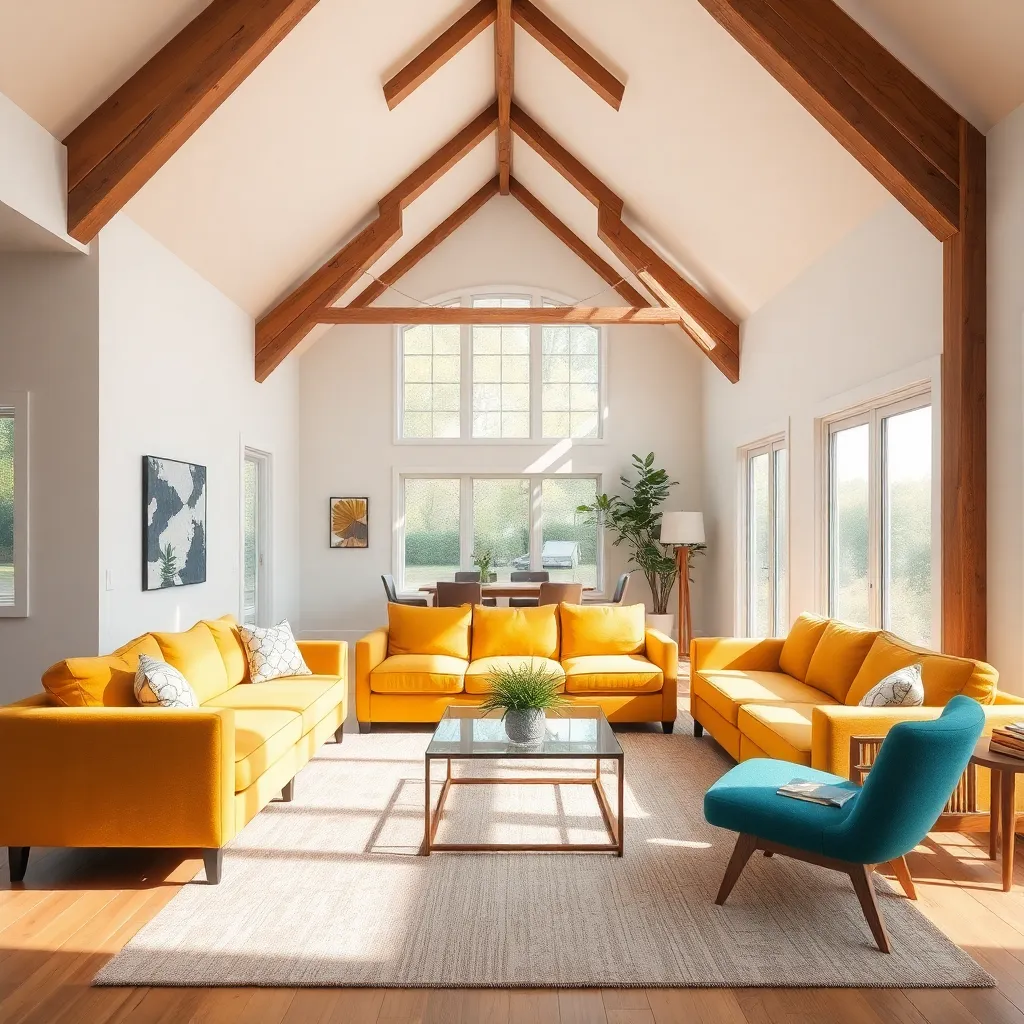
Architectural features such as fireplaces, moldings, and exposed beams can become stunning focal points in your living room through the strategic use of color blocking. To highlight these elements, consider painting them in a contrasting color that complements your room’s primary palette, creating a visual anchor that draws the eye.
For a more subtle effect, use a monochromatic scheme where the architectural feature is painted a few shades darker or lighter than the walls. This technique allows the feature to stand out without overwhelming the space, perfect for those who appreciate understated elegance.
Accentuate intricate details like crown molding or wainscoting by selecting a glossy or semi-gloss finish, which will reflect light and add dimension. Pair these finishes with matte walls to enhance the contrast and texture, offering a sophisticated look that is both modern and timeless.
For those ready to experiment, try a bold color on a single architectural element, such as a fireplace mantel, to energize the room. Complement this choice with accessories or furniture in matching tones to create a cohesive, vibrant look that feels intentional and stylish.
Balance Neutrals with Vivid Blocks
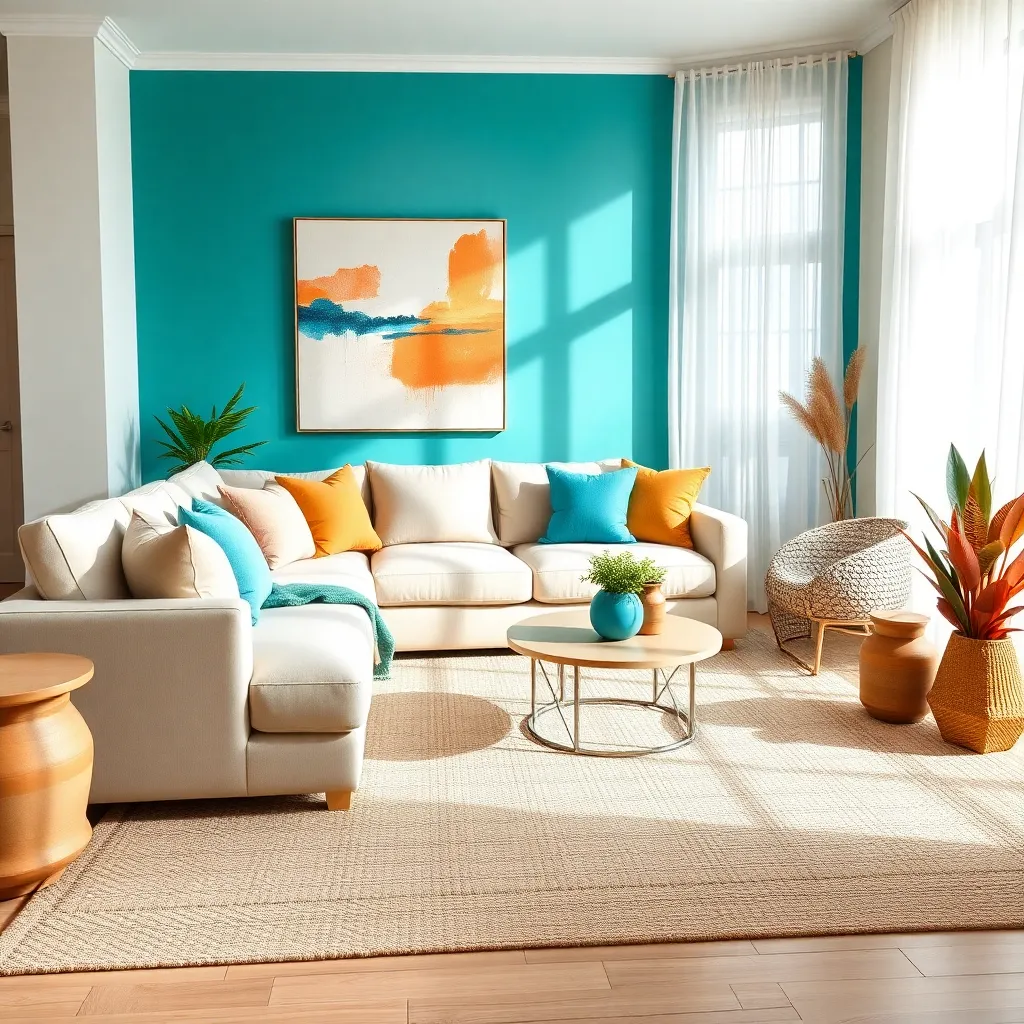
Balancing neutrals with vivid blocks is a sophisticated way to add depth and interest to your living room. Start by selecting a neutral base, such as soft whites or muted grays, to serve as a calming backdrop for your space.
Incorporate vivid color blocks through furniture or accessories like pillows and throws. Choose bold hues like teal or mustard, which can act as eye-catching focal points against the neutral palette.
When selecting furniture, consider pieces with clean lines and simple shapes to complement the vibrant accents. A colorful armchair or a bright area rug can effectively anchor the room while maintaining a cohesive look.
For advanced decorators, experiment with layering textures alongside your color blocks. Use materials like velvet or linen in your chosen vibrant shades to add richness and dimension to the room.
Integrate Colorful Furniture Elements
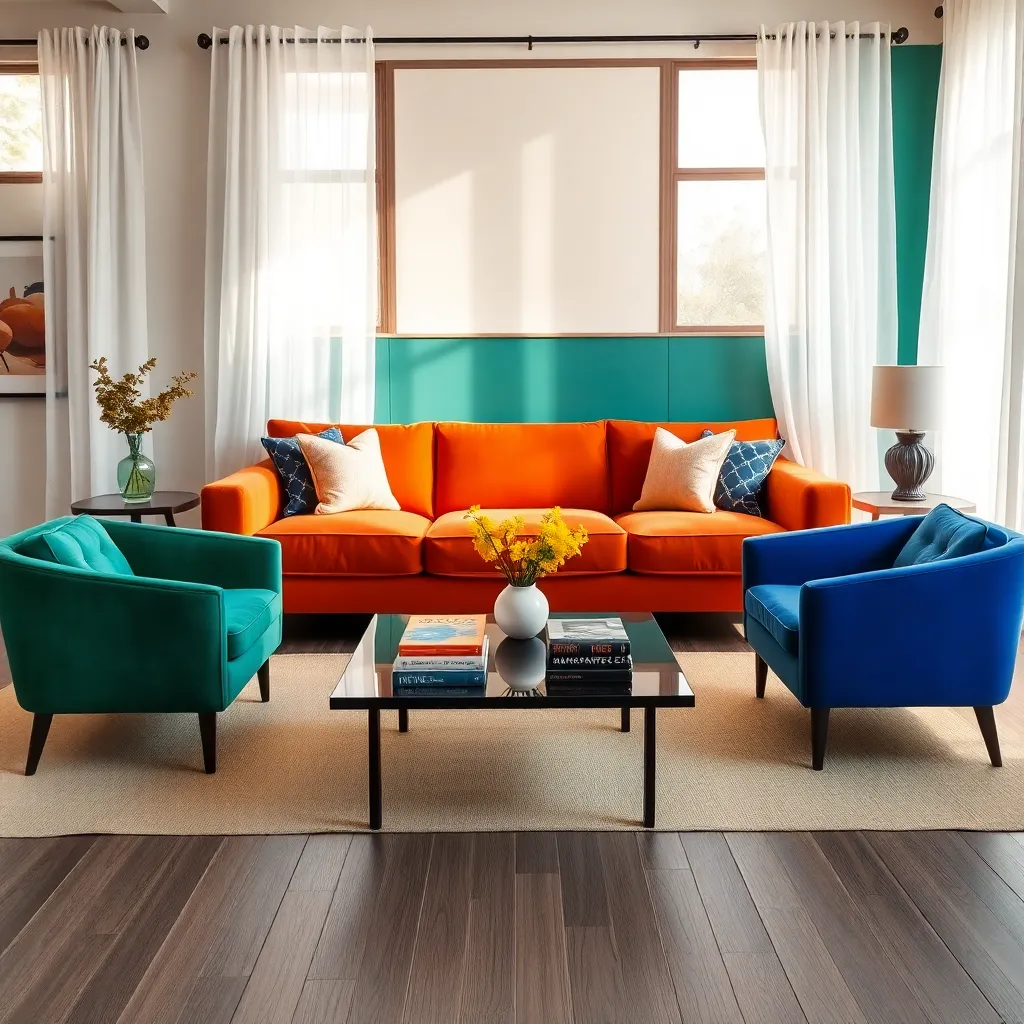
Adding colorful furniture elements can significantly enhance the vibrancy of your living room. Start by selecting a statement piece, such as a bold, red sofa or a teal armchair, to serve as the room’s focal point.
Consider the material of your furniture to complement the color choice. A velvet armchair in a rich jewel tone can add luxury and depth, while a painted wooden side table in a bright hue introduces a playful touch.
To maintain balance, pair your colorful furniture with neutral or muted surroundings. This approach allows the vibrant pieces to stand out without overwhelming the space, making it ideal for those new to color blocking.
Advanced decorators might experiment with mixing patterns alongside vivid colors. Combine a floral-patterned ottoman with a solid-colored couch to create a dynamic and engaging look, ensuring the patterns share a common color to maintain harmony.
Use Rugs for Visual Boundaries
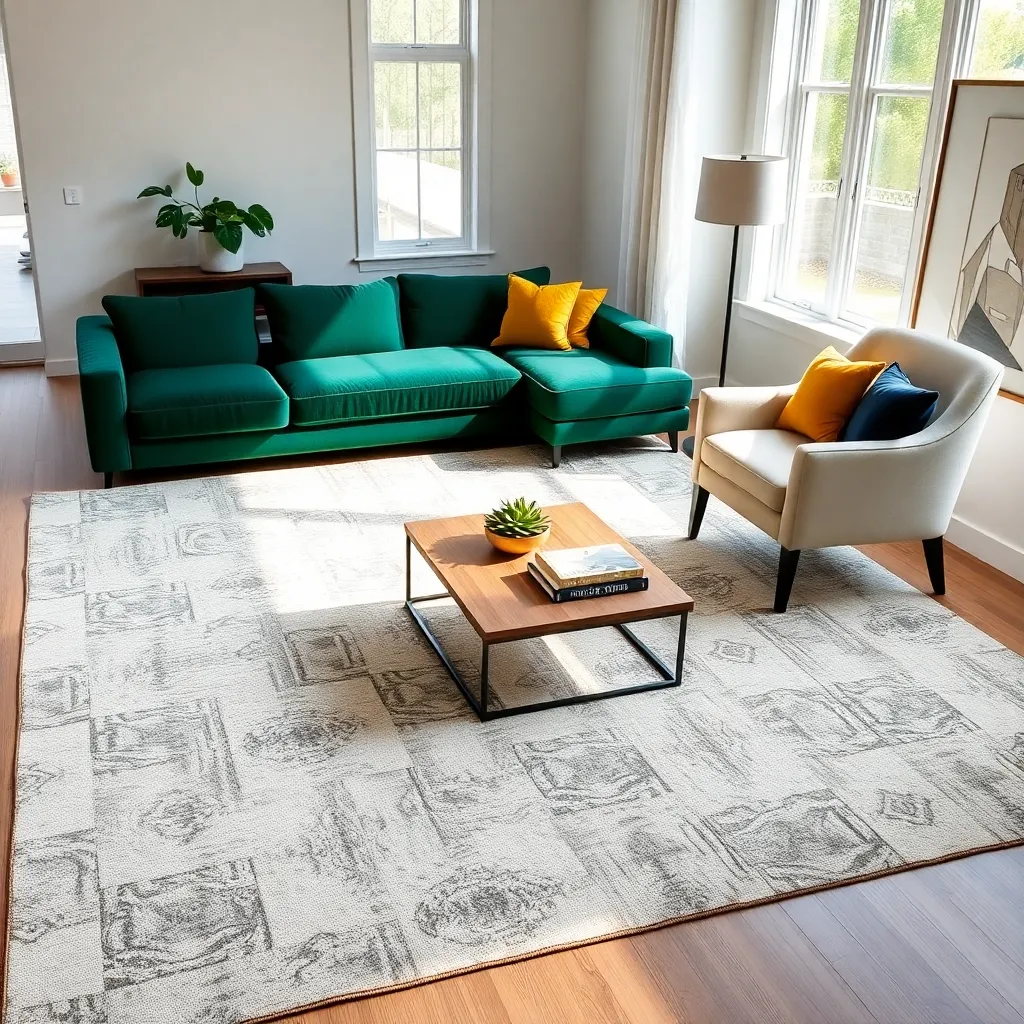
Rugs are an excellent tool for creating visual boundaries in a living room, effortlessly defining various functional areas. Placing a rug under a coffee table can anchor the seating area, while another rug might delineate a reading nook or workspace.
Choose rugs that complement your color scheme to enhance the color blocking effect. For beginners, a neutral-toned rug can balance bold furniture, while experienced decorators might experiment with vibrant patterns to add a dynamic element to the room.
When selecting a rug, consider its size relative to the furniture placement. A large rug can unify a seating arrangement by extending beyond the edges of chairs and sofas, while smaller rugs can highlight individual furniture pieces like armchairs or side tables.
Advanced decorators can layer rugs for added depth and texture, using a larger neutral rug as a base with a smaller, colorful one on top. This technique not only creates visual interest but also allows for easy updates to your color palette as trends change.
Conclusion: Growing Success with These Plants
In exploring the vibrant world of artistic color blocking for living rooms, we’ve delved into seven key concepts that can transform your living space and, by extension, your relational interactions within it. First, we discussed the psychological impact of colors, and how choosing the right hues can set the mood and influence emotions. Then, we explored the importance of balance and contrast, ensuring your space feels harmonious yet exciting. Next, we highlighted the power of focal points to draw attention and spark conversation. We also touched on the strategic use of textures and patterns to add depth and interest. Understanding the role of lighting, we emphasized how it enhances colors. We covered the importance of considering the room’s function in your color choices, and finally, the value of personal expression in making your space uniquely yours.
As a next step, take a moment to evaluate the colors in your own living room and consider how they impact your relationships. Could a splash of a new hue invigorate your space?
Bookmark this article as your go-to guide for future color inspiration. By embracing these tips, you’re not just enhancing your home; you’re fostering an environment where relationships can flourish and grow. Your journey to a more vibrant and connected living space—and life—starts today!
